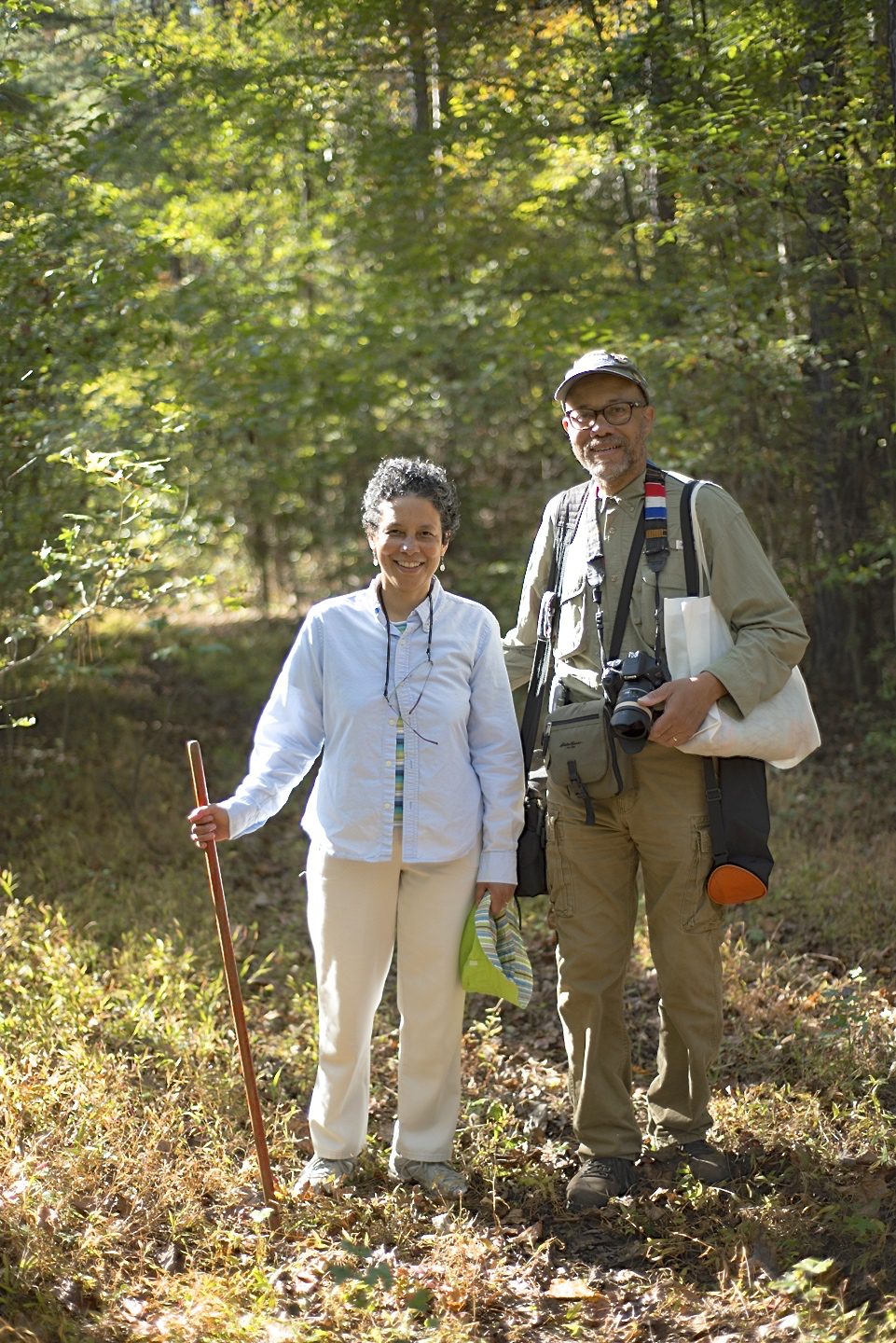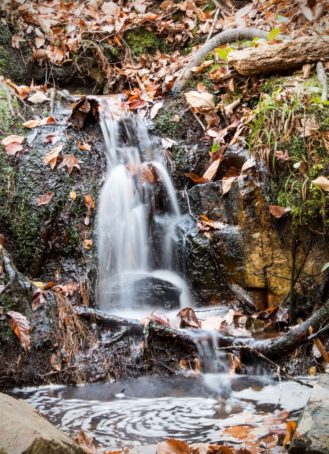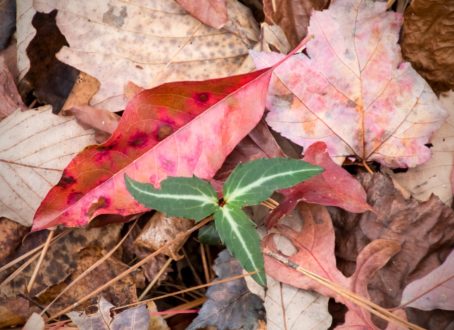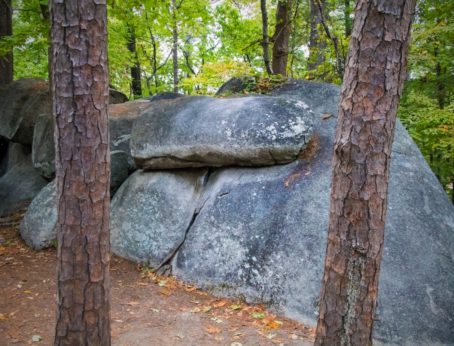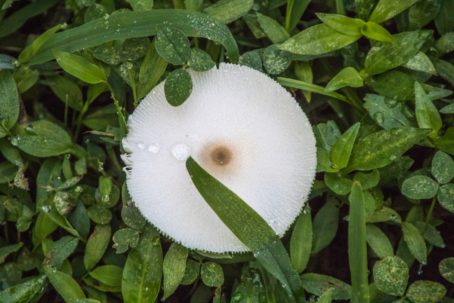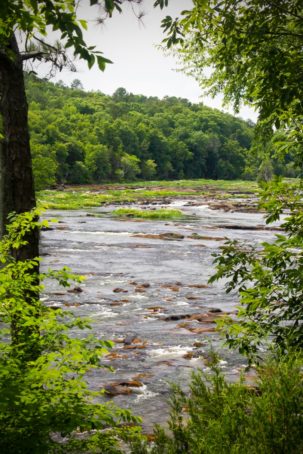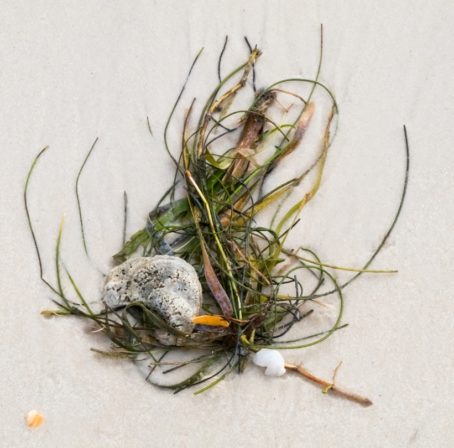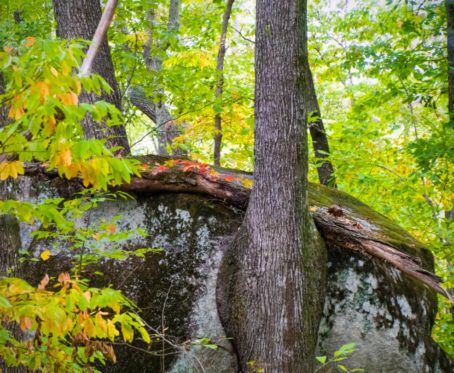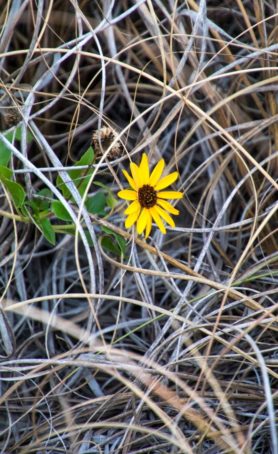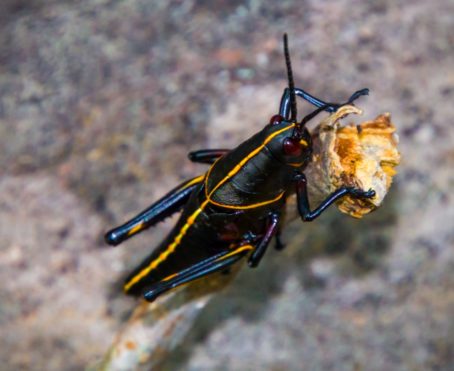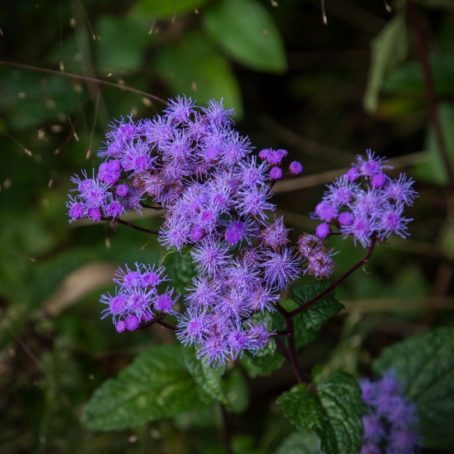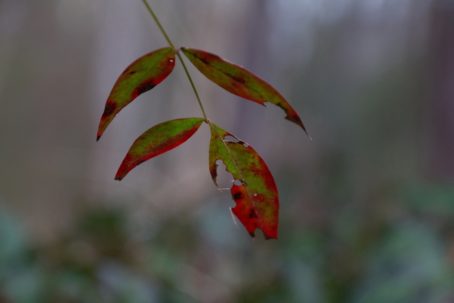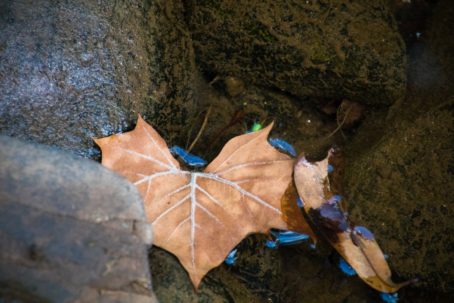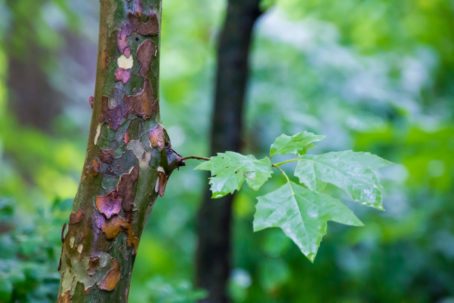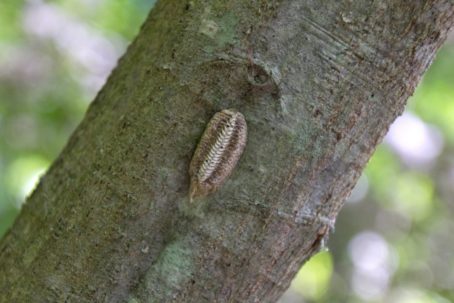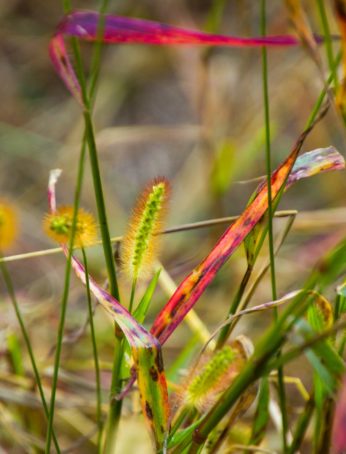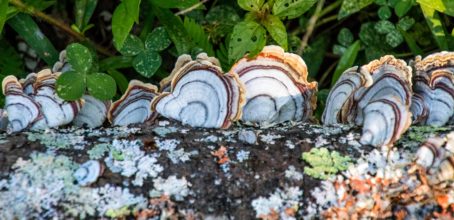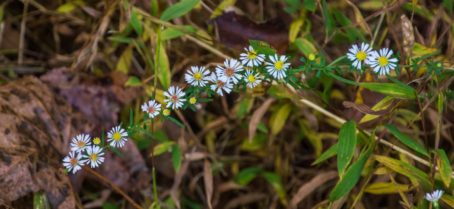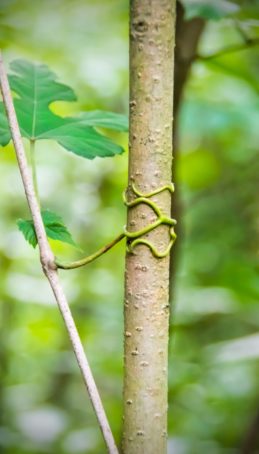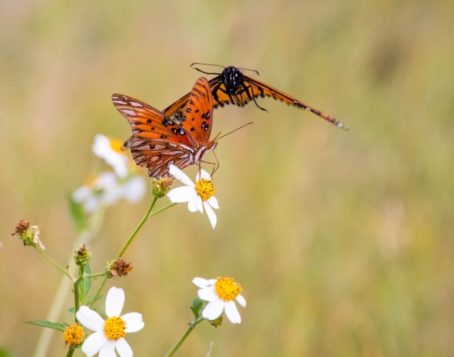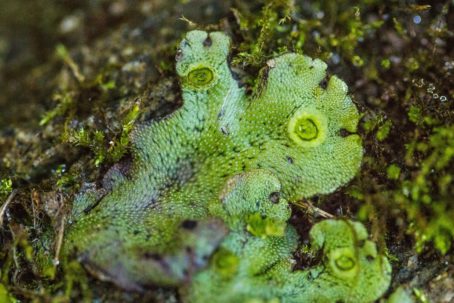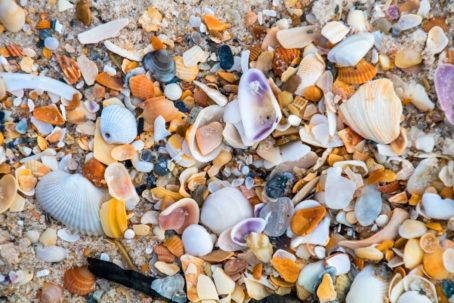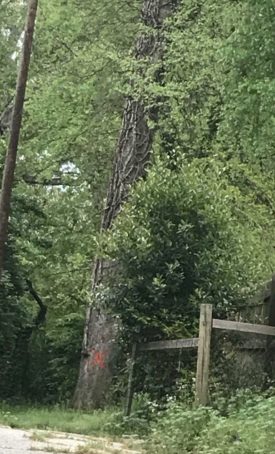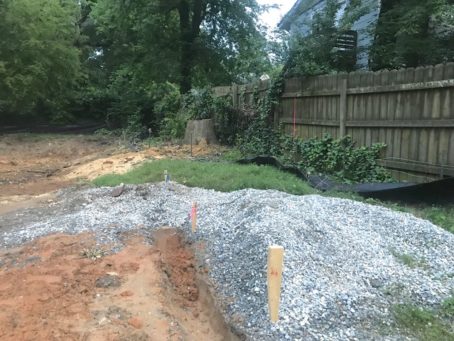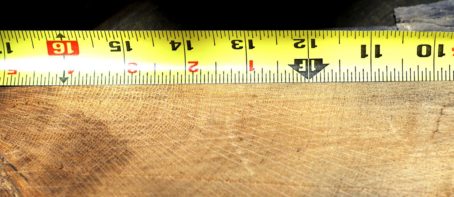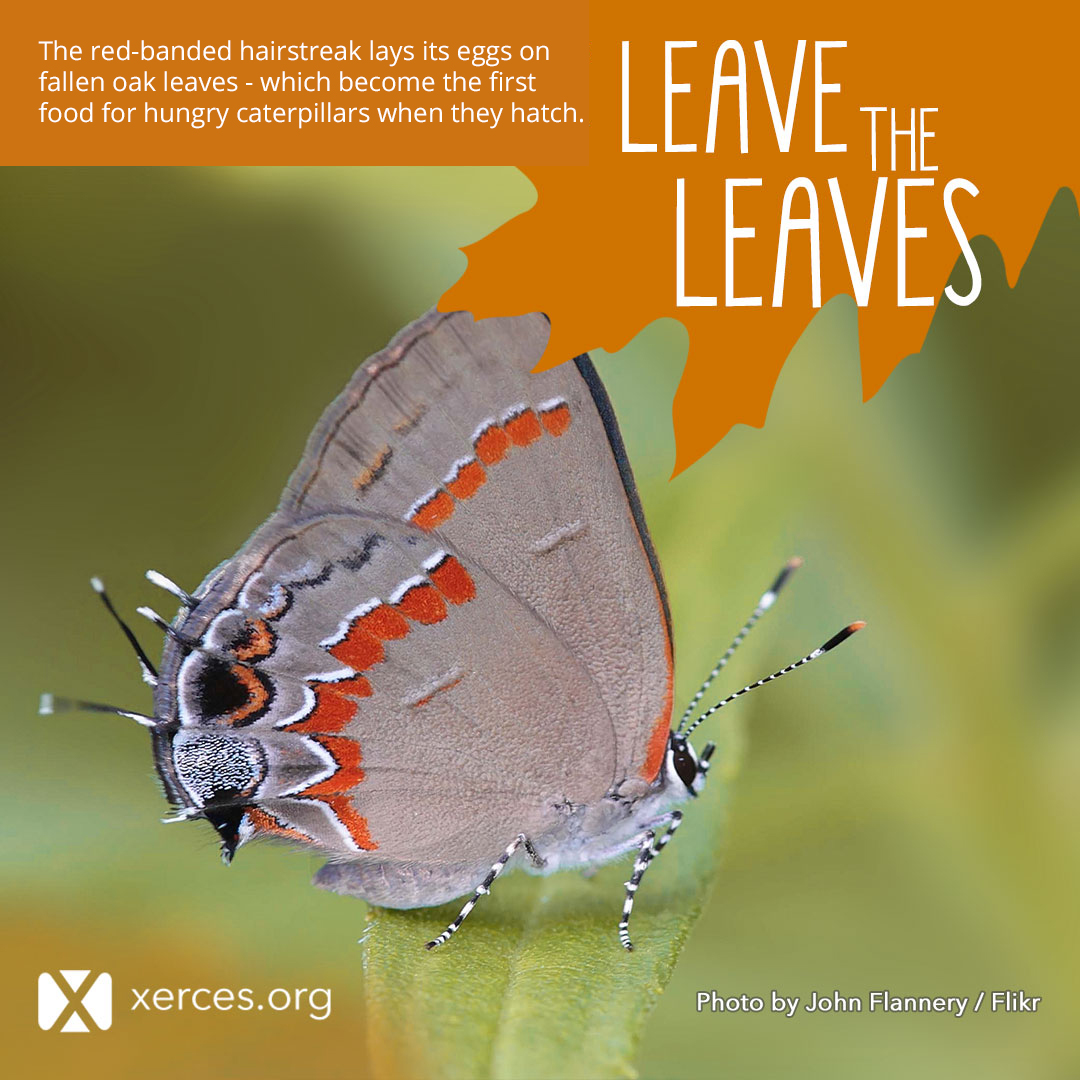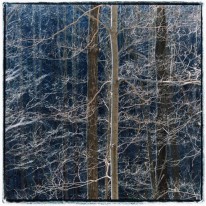Japanese chaff flower – a silent crisis lurking on Georgia trails
September 13, 2018
New See Eco-A’s Brochure on JCF:
Japanese Chaff Flower Alert Brochure and How to Distinguish JCF From Other High Value Native Species
••••••••••••••••••••••••••••••••••••••
The Japanese chaff flower is one of the newest invasive plant species spreading quickly through Georgia. Here’s how to spot and help prevent the spread of the plant, especially when hiking with your dog.
One of Georgia’s newest invasive plants is so aggressive, Eco-A naturalist Kathryn Kolb tells people to “treat its seeds like nuclear waste.”
Since the seeds of Japanese chaff flower are extremely prolific and viable, what she means is dispose of the plant completely once its pulled. September is the time when Japanese chaff flower seeds ripen and spread. Ironically, their best ally, though they’re innocent bystanders, is your dog.
The seeds stick like Velcro to dog fur, especially as our best friends brush by the plant on urban trails. You and your favorite hiking companion can be in a Decatur park on Saturday, then hiking a waterfall in North Georgia on Sunday, not knowing the chaff flower seeds hitchhiked a ride on your pet’s fur or stuck to your own shoes and clothes. Its seed has just been spread miles away from its original site.

While all good trail and park managers are well aware of invasive plants like kudzu, privet and English ivy, Japanese chaff flower is still under the radar and spreads much more quickly, making the little-known pest a true crisis for Georgia’s parks and trails. About 60% of the robust grower’s seeds germinate immediately. Atlanta is one of four hotspots nationally; it has taken over the entire forest floor in at least one Atlanta park, and is poised to take over several others.
“This plant poses a severe threat to biodiversity, much more than English ivy or kudzu, and once it becomes established, it is exponentially more difficult to remove,” Kolb explains. “If left unchecked, it will smother out all other plants,” she has observed. Kolb leads people of all ages on guided nature walks in parks and trails around metro-Atlanta where she sees the plant spreading swiftly.

Japanese chaff flower, Achryanthes japonica, is native to Korea and Japan and has “only been spotted in Atlanta for five years,” she goes on. That’s why it’s so important to engage volunteer hikers right now to learn to identify it and make the effort to dispose of it in trash bags. It pulls up easily by the root in its first year, yet after three years, it’s harder to pull.
by Lisa Frank, photos by Kathryn Kolb as published in AtlantaTrails.com.
